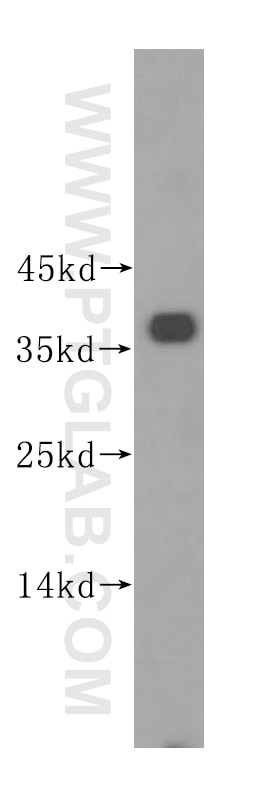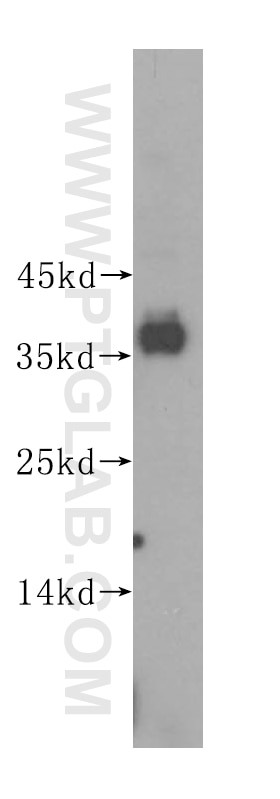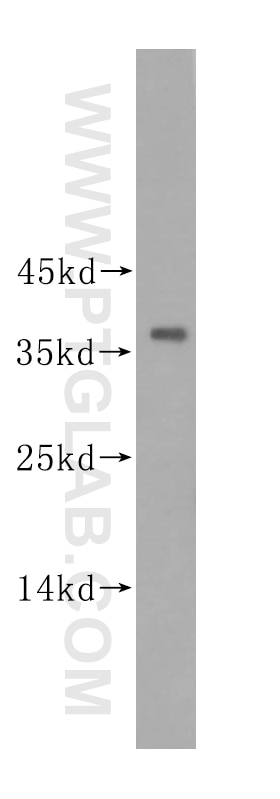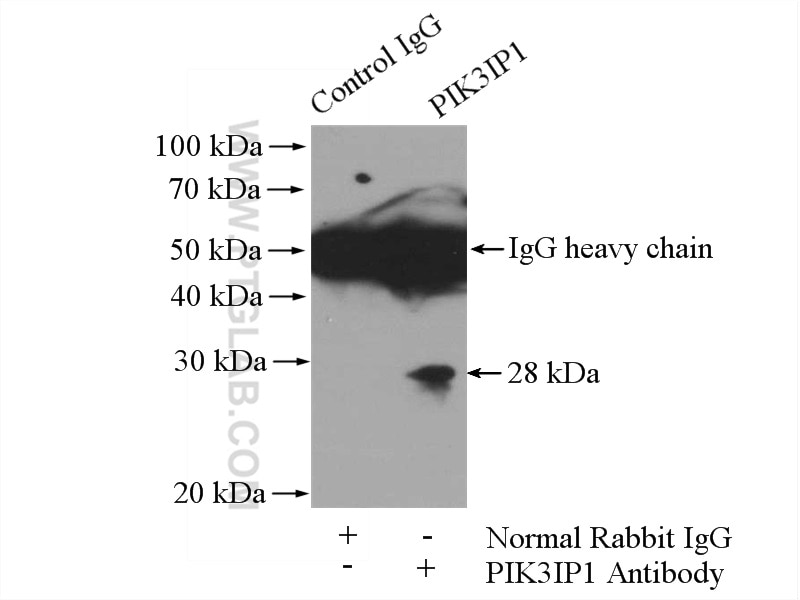- Featured Product
- KD/KO Validated
PIK3IP1 Polyklonaler Antikörper
PIK3IP1 Polyklonal Antikörper für IP, WB,ELISA
Wirt / Isotyp
Kaninchen / IgG
Getestete Reaktivität
human, Maus, Ratte und mehr (2)
Anwendung
WB, IP, IF, CoIP, ELISA
Konjugation
Unkonjugiert
Kat-Nr. : 16826-1-AP
Synonyme
Galerie der Validierungsdaten
Geprüfte Anwendungen
| Erfolgreiche Detektion in WB | HeLa-Zellen, HepG2-Zellen, Mauslebergewebe |
| Erfolgreiche IP | HeLa-Zellen |
Empfohlene Verdünnung
| Anwendung | Verdünnung |
|---|---|
| Western Blot (WB) | WB : 1:500-1:2000 |
| Immunpräzipitation (IP) | IP : 0.5-4.0 ug for 1.0-3.0 mg of total protein lysate |
| It is recommended that this reagent should be titrated in each testing system to obtain optimal results. | |
| Sample-dependent, check data in validation data gallery | |
Veröffentlichte Anwendungen
| KD/KO | See 4 publications below |
| WB | See 12 publications below |
| IF | See 1 publications below |
| CoIP | See 1 publications below |
Produktinformation
16826-1-AP bindet in WB, IP, IF, CoIP, ELISA PIK3IP1 und zeigt Reaktivität mit human, Maus, Ratten
| Getestete Reaktivität | human, Maus, Ratte |
| In Publikationen genannte Reaktivität | human, Huhn, Maus, Ratte, Rind |
| Wirt / Isotyp | Kaninchen / IgG |
| Klonalität | Polyklonal |
| Typ | Antikörper |
| Immunogen | PIK3IP1 fusion protein Ag10427 |
| Vollständiger Name | phosphoinositide-3-kinase interacting protein 1 |
| Berechnetes Molekulargewicht | 263 aa, 28 kDa |
| Beobachtetes Molekulargewicht | 37 kDa |
| GenBank-Zugangsnummer | BC011049 |
| Gene symbol | PIK3IP1 |
| Gene ID (NCBI) | 113791 |
| Konjugation | Unkonjugiert |
| Form | Liquid |
| Reinigungsmethode | Antigen-Affinitätsreinigung |
| Lagerungspuffer | PBS mit 0.02% Natriumazid und 50% Glycerin pH 7.3. |
| Lagerungsbedingungen | Bei -20°C lagern. Nach dem Versand ein Jahr lang stabil Aliquotieren ist bei -20oC Lagerung nicht notwendig. 20ul Größen enthalten 0,1% BSA. |
Hintergrundinformationen
PIK3IP1(Phosphoinositide-3-kinase-interacting protein 1) is also named as HGFL. The class IA phosphoinositol-3-kinases (PI3Ks) regulate important cellular processes such as proliferation, growth, survival, motility and metabolism. PIK3IP1 is a transmembrane protein that possesses a region in its intracellular domain that shares homology with the p85 regulatory subunit of PI3K. It has 5 isoforms produced by alternative splicing with the MW of 11, 18, 19, 25,28 kDa. PIK3IP1 undergoes N- and O-linked amino acid glycosylation. The major glycosylated form of PIK3IP1 migrates at about 43 kDa in western blot analysis, while the unglycosylated form migrates at 37 kDa. It is also detected a 65 kDa variant in HepG2 cell lysate that PIK3IP1 is indeed membrane bound and that these variants arise from alternative splicing and/or post-translational processing events such as enzymatic proteolysis and/or glycosylation. (PMID:18632611).
Protokolle
| Produktspezifische Protokolle | |
|---|---|
| WB protocol for PIK3IP1 antibody 16826-1-AP | Protokoll herunterladen |
| IP protocol for PIK3IP1 antibody 16826-1-AP | Protokoll herunterladen |
| Standard-Protokolle | |
|---|---|
| Klicken Sie hier, um unsere Standardprotokolle anzuzeigen |
Publikationen
| Species | Application | Title |
|---|---|---|
Cell Distinct Regulation of Th17 and Th1 Cell Differentiation by Glutaminase-Dependent Metabolism. | ||
Nat Commun Dual blockade of the lipid kinase PIP4Ks and mitotic pathways leads to cancer-selective lethality.
| ||
J Immunol Cutting Edge: Foxp1 Controls Naive CD8+ T Cell Quiescence by Simultaneously Repressing Key Pathways in Cellular Metabolism and Cell Cycle Progression. | ||
Exp Cell Res Suppression of PI3K signaling is linked to autophagy activation and the spatiotemporal induction of the lens organelle free zone. |





